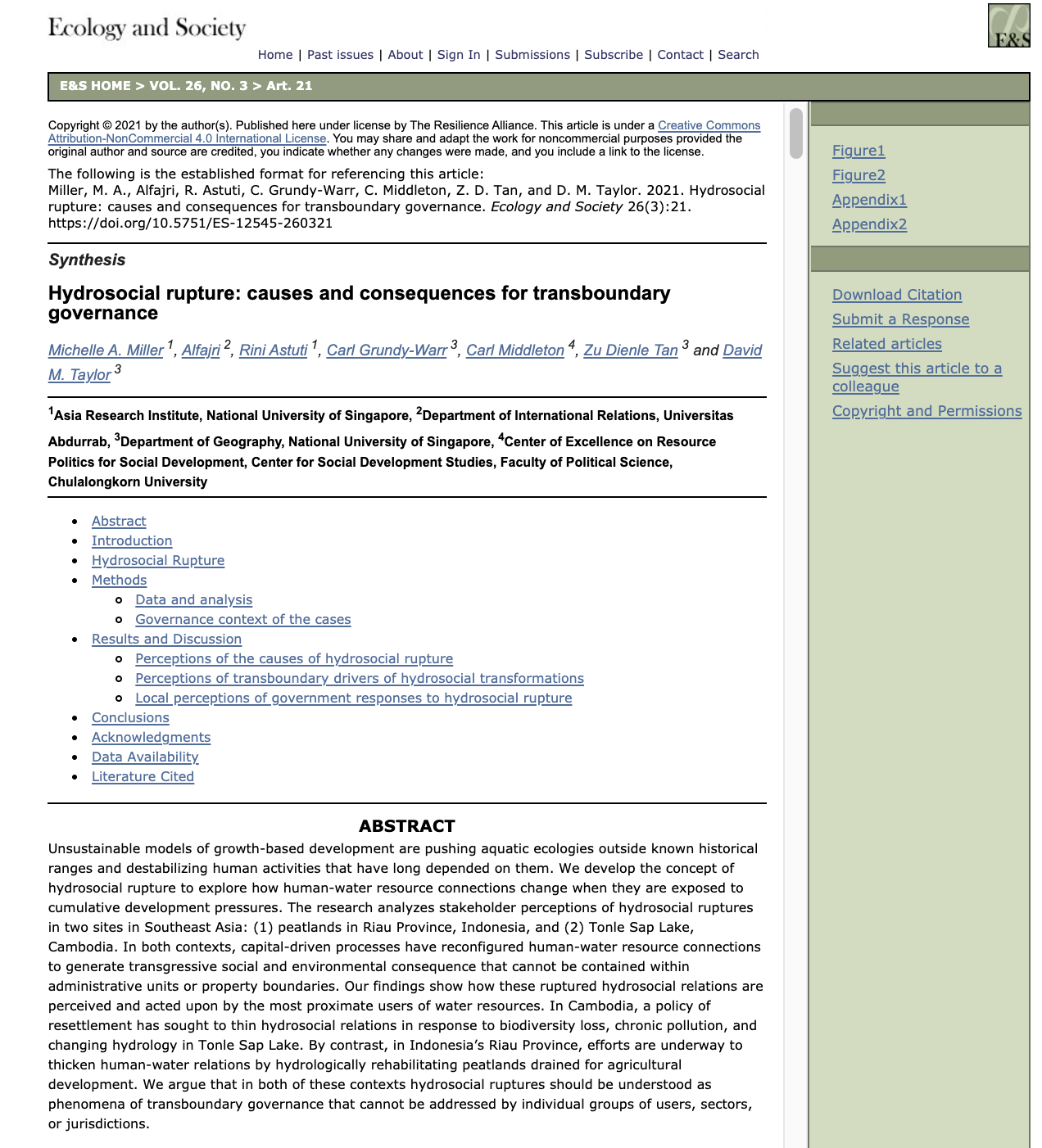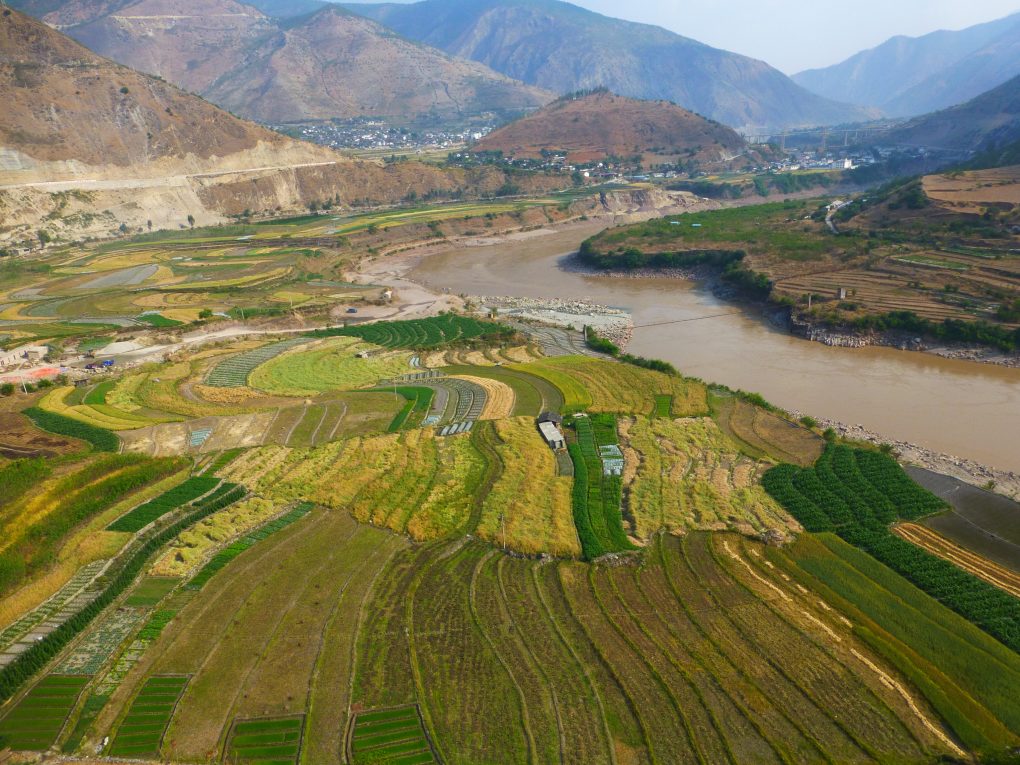JOURNAL ARTICLE: Hydrosocial Rupture: Causes and Consequences for Transboundary Governance
/Publication date: September 2021
Publication: Ecology and Society
Authors: Michelle A. Miller, Alfajri, Rini Astuti, Carl Grundy-Warr, Carl Middleton, Zu Dienle Tan and David M. Taylor
Abstract:
Unsustainable models of growth-based development are pushing aquatic ecologies outside known historical ranges and destabilizing human activities that have long depended on them. We develop the concept of hydrosocial rupture to explore how human-water resource connections change when they are exposed to cumulative development pressures. The research analyzes stakeholder perceptions of hydrosocial ruptures in two sites in Southeast Asia: (1) peatlands in Riau Province, Indonesia, and (2) Tonle Sap Lake, Cambodia. In both contexts, capital-driven processes have reconfigured human-water resource connections to generate transgressive social and environmental consequence that cannot be contained within administrative units or property boundaries. Our findings show how these ruptured hydrosocial relations are perceived and acted upon by the most proximate users of water resources. In Cambodia, a policy of resettlement has sought to thin hydrosocial relations in response to biodiversity loss, chronic pollution, and changing hydrology in Tonle Sap Lake. By contrast, in Indonesia’s Riau Province, efforts are underway to thicken human-water relations by hydrologically rehabilitating peatlands drained for agricultural development. We argue that in both of these contexts hydrosocial ruptures should be understood as phenomena of transboundary governance that cannot be addressed by individual groups of users, sectors, or jurisdictions.
Keywords: hydrosocial relations; rupture; Southeast Asia; transboundary water governance
See the article here.
Citation: Miller, M. A., Alfajri, R. Astuti, C. Grundy-Warr, C. Middleton, Z. D. Tan, and D. M. Taylor. 2021. Hydrosocial rupture: causes and consequences for transboundary governance. Ecology and Society 26(3):21. https://doi.org/10.5751/ES-12545-260321










